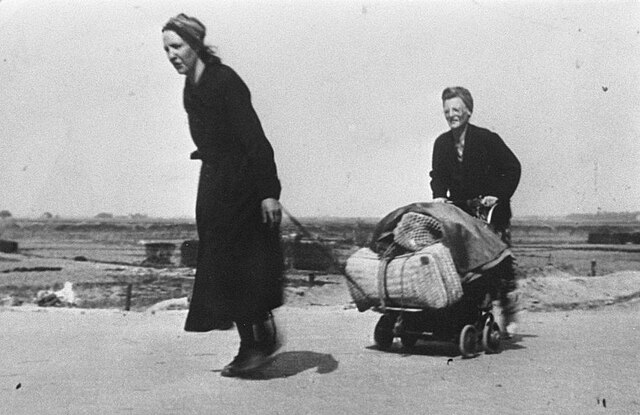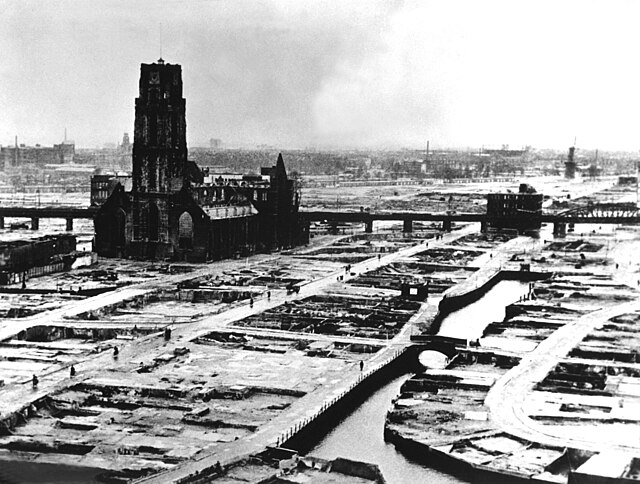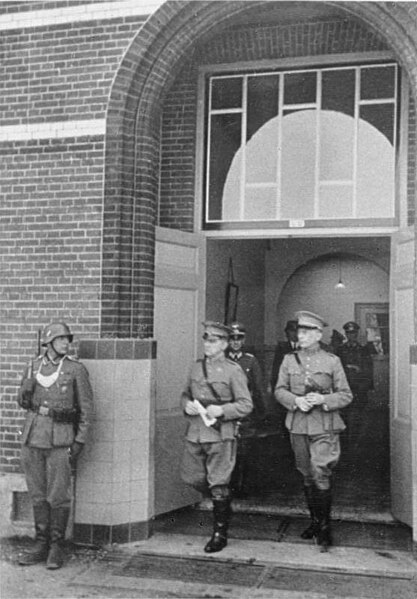Dutch famine of 1944–1945
The Dutch famine of 1944–1945, also known as the Hunger Winter, was a famine that took place in the German-occupied Netherlands, especially in the densely populated western provinces north of the great rivers, during the relatively harsh winter of 1944–1945, near the end of World War II.
Dutch children eating soup during the famine of 1944–1945
Two Dutch women transporting food during the famine period
Dutch food ration coupons from World War II
A letter of commemoration given to a grocer whose shop served as a Red Cross point giving out the "Swedish bread"
Netherlands in World War II
Despite Dutch neutrality, Nazi Germany invaded the Netherlands on 10 May 1940 as part of Fall Gelb. On 15 May 1940, one day after the bombing of Rotterdam, the Dutch forces surrendered. The Dutch government and the royal family relocated to London. Princess Juliana and her children sought refuge in Ottawa, Canada until after the war.
The city of Rotterdam after the German bombing during the German invasion of the Netherlands in May 1940.
A bunker of the Peel-Raam Line, built in 1939
Dutch soldiers guard the Holland Water Line shortly after mobilisation, 1939
Henri Winkelman (centre), just after signing the Dutch capitulation, 15 May 1940.








